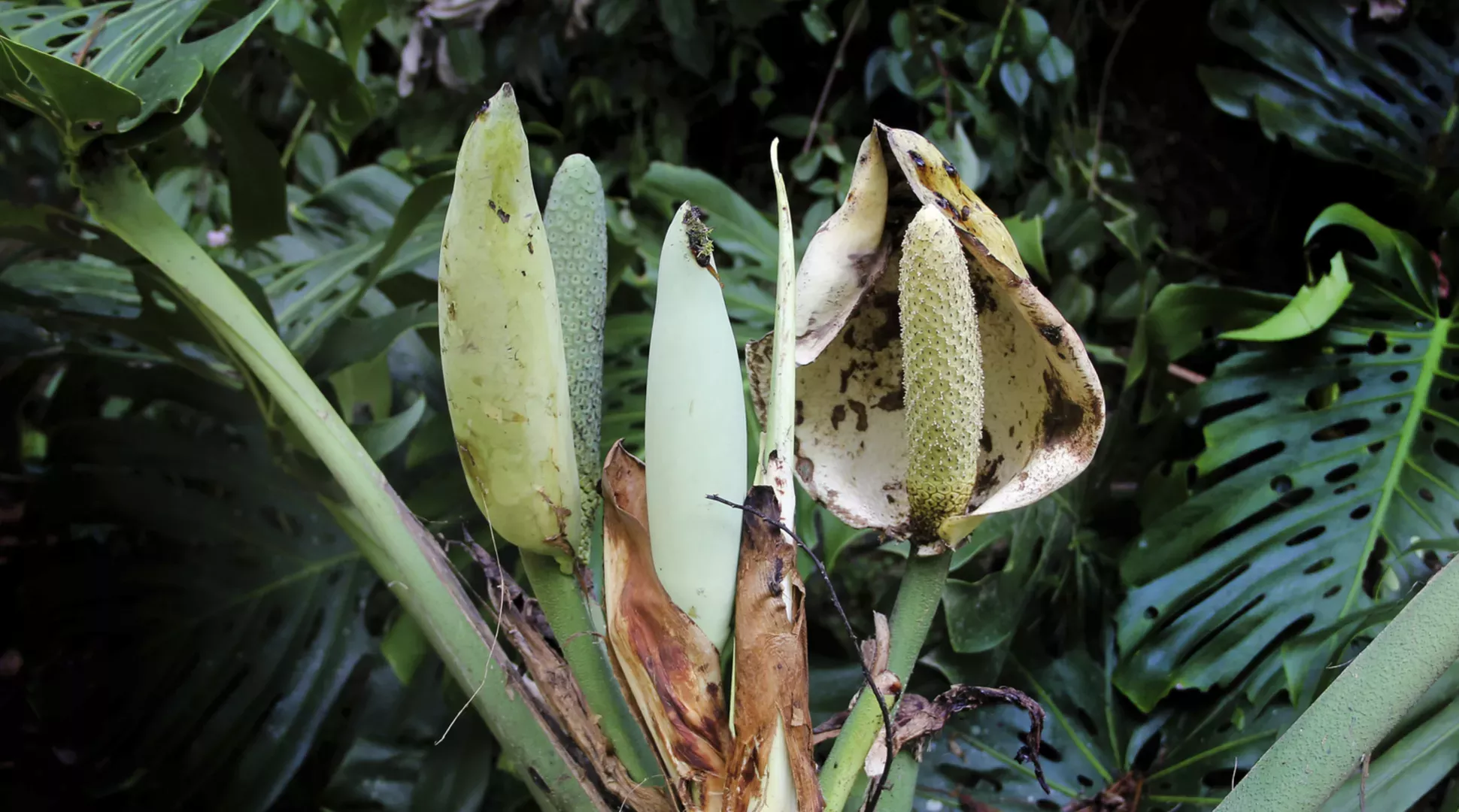21 July 2022
Delicious monsters and tasty elephants: Kew's edible aroids
They're not very well known, but edible aroids are some of the oldest cultivated crops in the world. Tropical Nursery horticulturalist Louisa Hall introduces some of these curious species.

The glasshouses and Tropical Nursery at Kew are home to some world-famous edible plants.
You might see familiar fruits such as bananas (Musa acuminata) and papayas (Carica papaya), or find your daily caffeine boost in its natural, unprocessed state – as dark coffee beans (Coffea arabica) or the leaves of the tea plant (Camellia sinensis).
Kew is also home to many lesser known edible species from the Araceae family, otherwise known as aroids.
While one of the best known aroids, the titan arum or corpse flower, is inedible, Araceae contains many edible species, including the intriguingly named 'delicious monster', and one of the oldest cultivated crops in the world.
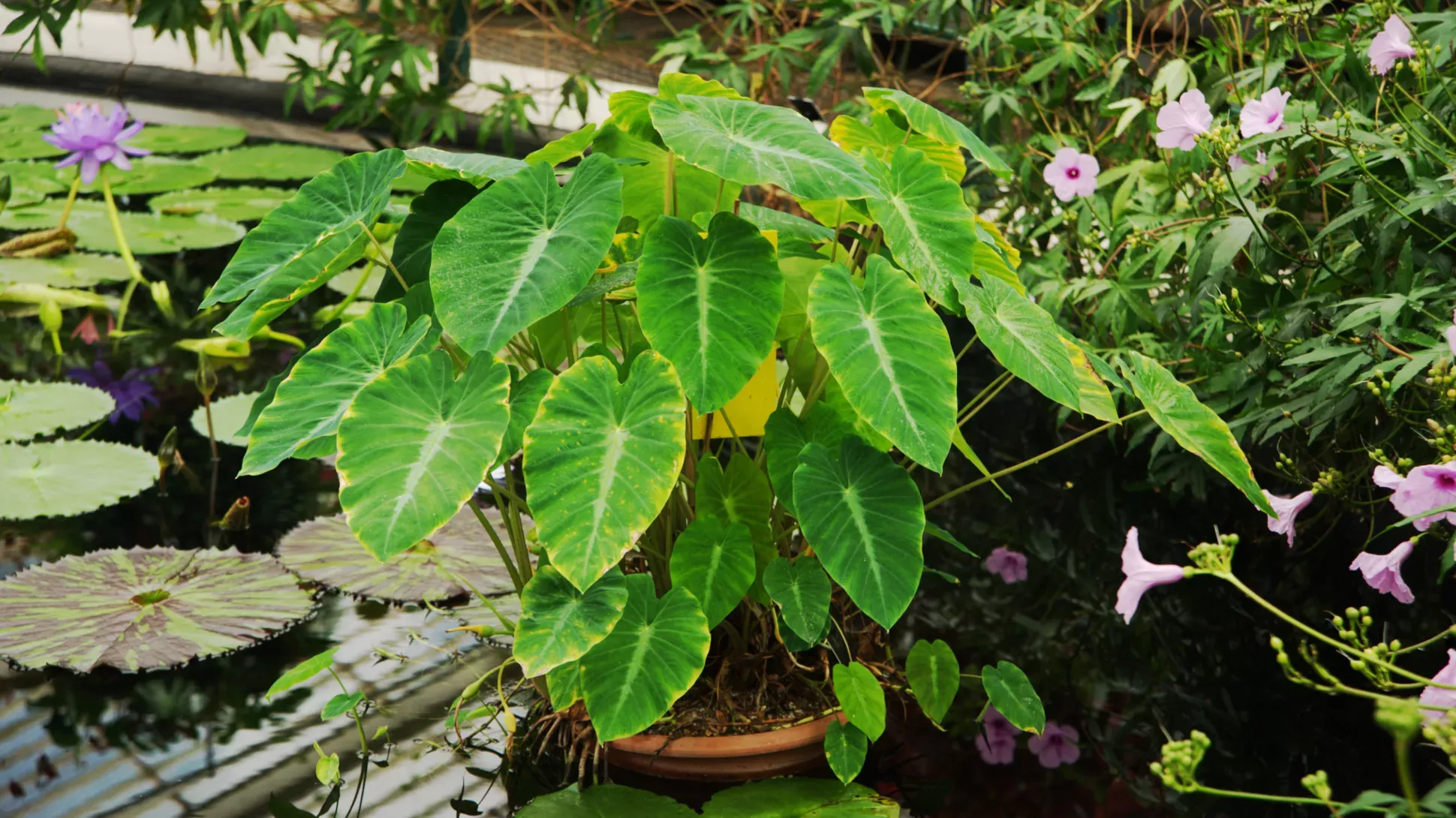
Ancient arable aroids
The oldest cultivated crop in the family is Colocasia esculenta, commonly known as taro.
It originated in tropical Asia and has been cultivated for more than 10,000 years.
Today, around 400 million people include taro in their diet. One square kilometre of the crop is capable of feeding 5,000 people for a year, so its long-term popularity comes as no surprise.
The corms (underground plant stems used for winter storage similar to tubers) are a good source of carbohydrate and are richer in protein than most other major starch crops. The leaves of certain cultivars are eaten like spinach and are an excellent source of vitamin A, vitamin C and minerals.
The corms are ground into flour to make bread and cakes, or sliced and fried to make crisps. Like most aroids though, the presence of toxins means that all parts must be cooked to render them edible, and in general they are boiled or roasted.
Taro’s natural habitat is tropical humid forest. In the Tropical Nursery at Kew, it is grown in humus-rich compost at around 22°C and 70% humidity.
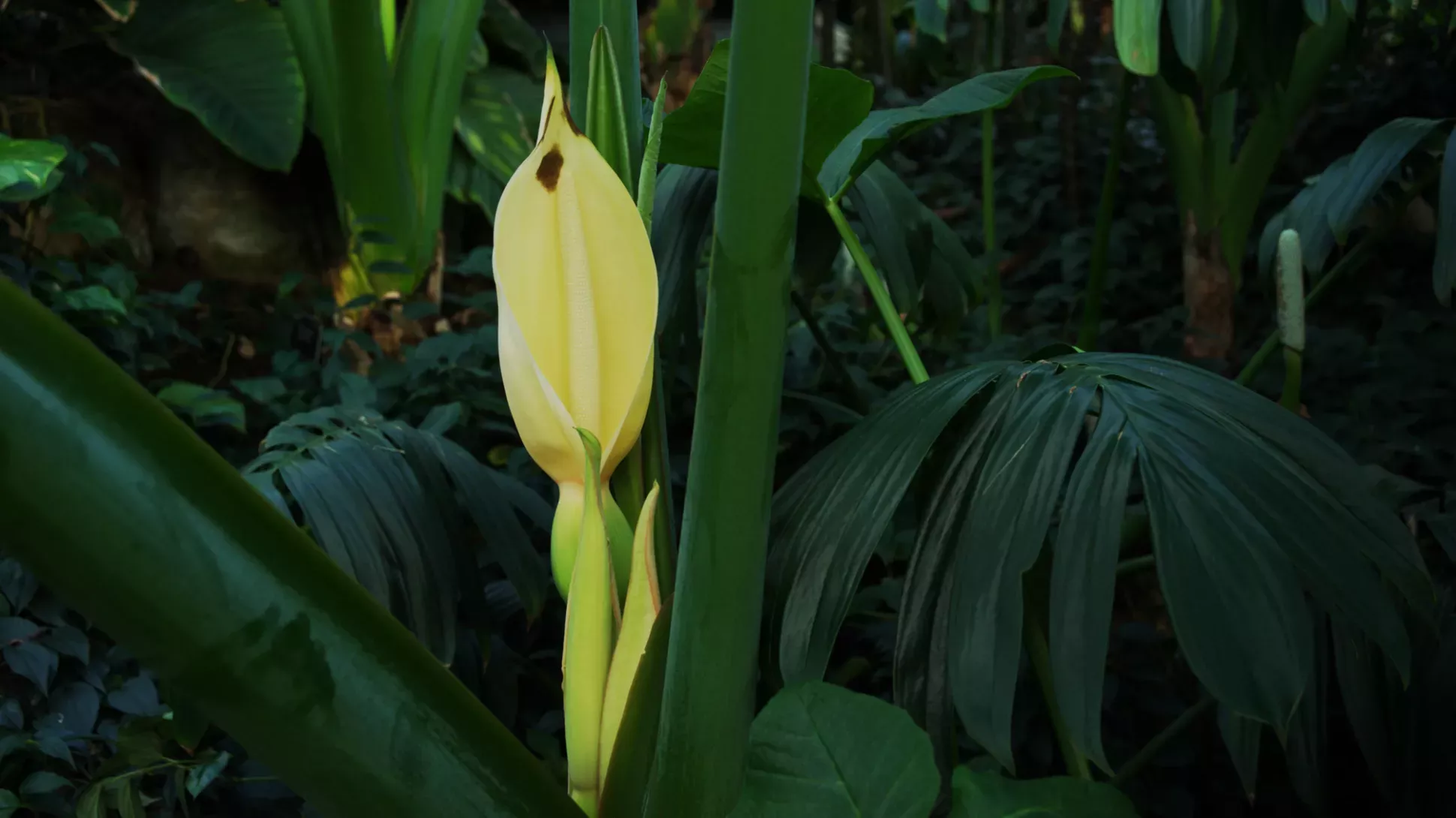
The second most important edible aroid is in the genus Xanthosoma, commonly known as tannia or cocoyam.
Widely cultivated in tropical America since precolonial times, both the corms and leaves of Xanthosoma species are eaten.
The main cultivated species is X. sagittifolium, which can be seen in the Palm House at Kew. Look out for its striking purple stems and purple veins beneath large, light green leaves.
Big plants for big appetites
Where Colocasia might reach one metre and Xanthosoma two metres in height, Alocasia macrorrhizos, commonly known as giant taro, can grow up to four metres tall and have leaves one metre long!
The corms of this species are rough and bitter. In Malaysia, it is first soaked in water with betel nut chips to remove the bitterness, and then boiled in coconut cream with spices and dried prawns to create a dish known as ‘curry santan’.
Other giant aroids can be found in the same genus as titan arum. Amorphophallus paeoniifolius, or the elephant yam has corms that can reach 25 kg in weight. Yielding slightly smaller corms is A. konjac, or konjac plant, which weighs in at a mere 10 kg.
Konjac has been cultivated in China for 2,000 years and is used to make a variety of food products. It is used not only as a root vegetable, but also to make 'konnyaku' (a gelatinous ingredient in many Japanese foods), and flour (from which noodles and cakes are prepared).
These impressive plants appear treelike but are in fact composed of just one leaf. They are also seasonally dormant so may be hard to spot in the public glasshouses.
Keep your eyes peeled when you next visit our Princess of Wales Conservatory.
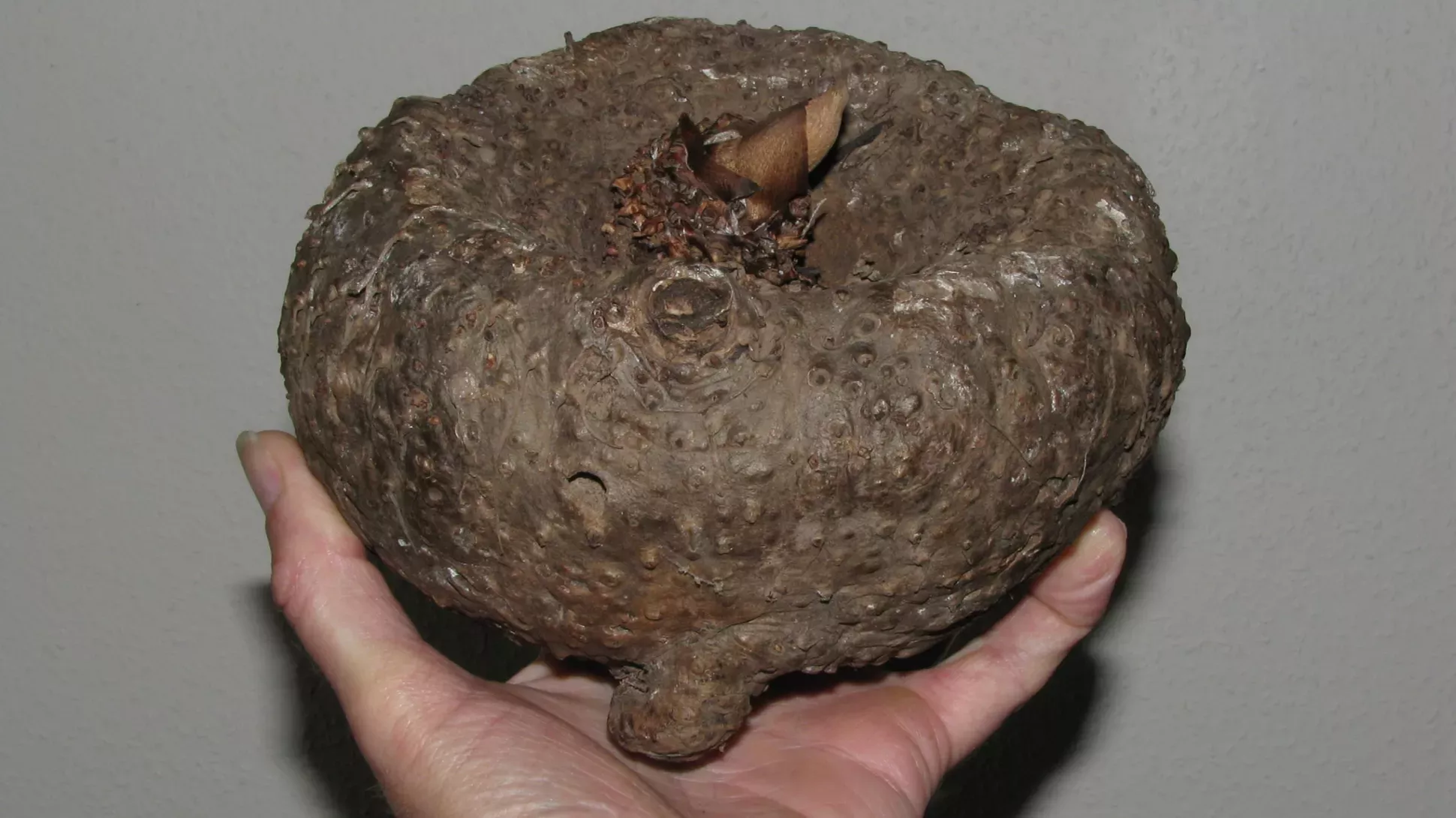
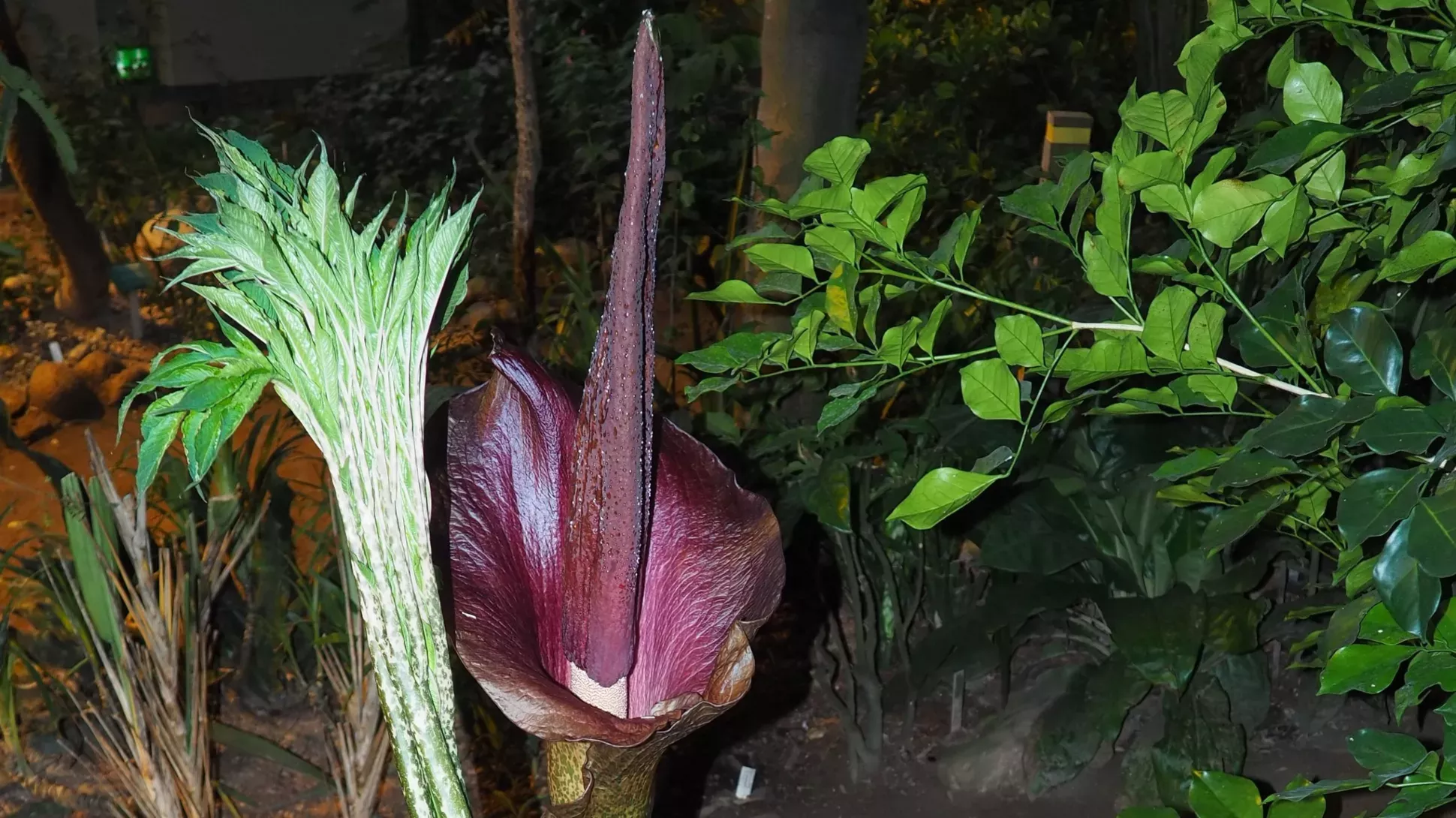
A wetland wonder
There is even an edible aroid that grows where nothing else will – in stagnant, brackish swamps. Cyrtosperma merkusii, the swamp taro, is cultivated in Southeast Asia and the Pacific.
It needs the longest growing time of all the edible aroid root crops, on average requiring three to six years before harvesting.
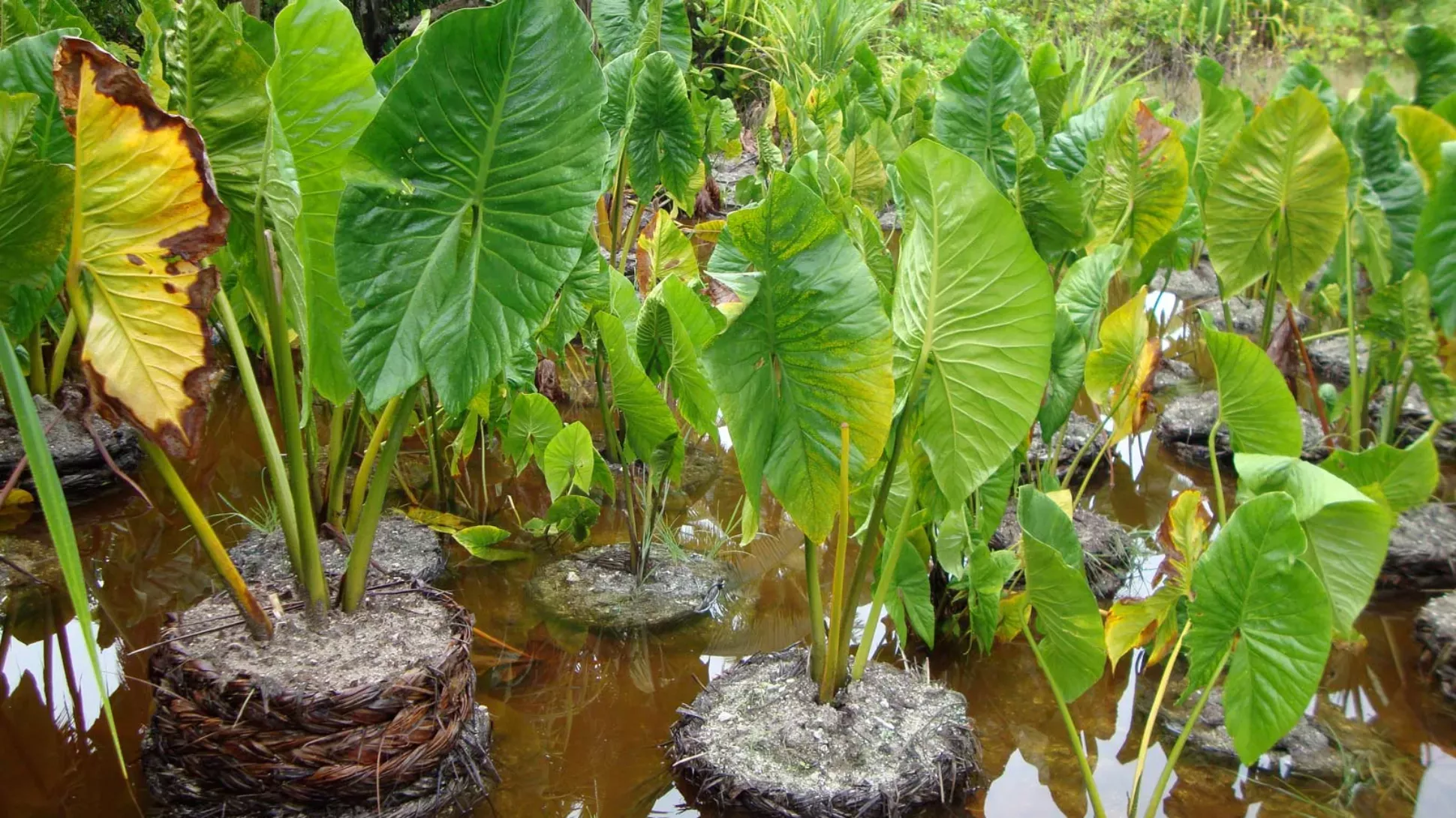
A delicious monster
And what about the "delicious monster'? This aroid may be a little more familiar, as it is in fact the swiss cheese plant (Monstera deliciosa). A familiar sight as a houseplant, the plant gets its common name from the windows in the leaves being reminiscent of the holes in the famous cheese.
But not many people know that the fruit of the swiss cheese plant is not only edible, but tastes like a mix of pineapple and banana! The fruits look similar to corn on the cob, but covered in small hexagonal scales, which drop off as the fruit ripens.
The unripened fruits contain needle shaped calcium oxalate crystals which can cause severe irritation of the mouth when eaten, so it's crucial for these fruits to be allowed to ripen before eating.
While it's incredibly rare for a swiss cheese plant to flower and fruit outside of its tropical habitat, perhaps one day, Monstera fruit will be a familiar sight in our fruit bowl!
